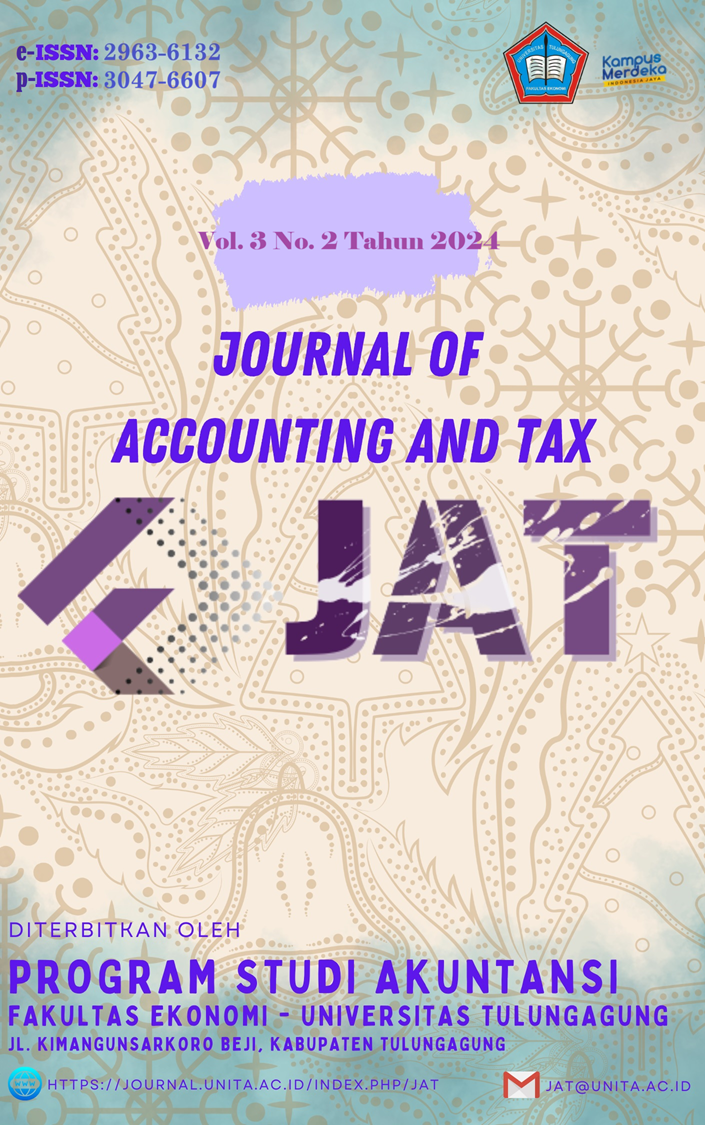STRENGTHENING CASH MANAGEMENT THROUGH EFFECTIVE INTERNAL CONTROL SYSTEMS
DOI:
https://doi.org/10.36563/jat.v3i2.1346Keywords:
Cash management, internal control, COSO framework, financial governance, risk mitigationAbstract
This study evaluates the effectiveness of cash management practices in financial institutions by examining their alignment with the Committee of Sponsoring Organizations of the Treadway Commission (COSO) framework. Utilizing a qualitative research methodology, the study highlights systematic procedures for account openings, deposits, and withdrawals, ensuring operational transparency, efficiency, and customer satisfaction. The findings emphasize the importance of robust internal controls in mitigating risks, safeguarding assets, and improving process reliability. Key COSO components—control environment, risk assessment, control activities, information and communication, and monitoring—are applied to strengthen cash management systems, reducing fraud and enhancing financial reporting accuracy. This structured approach not only facilitates compliance with regulatory standards but also fosters stakeholder confidence and institutional sustainability. The study concludes with recommendations to optimize cash management practices and address emerging challenges in financial governance.
Downloads
References
Ahmed, S. (2019). Internal audit and control: A case study approach. Management Audit Journal, 25(4), 295-307.
Arens, A. A., Elder, R. J., & Beasley, M. S. (2020). Auditing and assurance services: An integrated approach. Pearson.
Brown, P. (2020). The role of COSO in organizational risk management. Journal of Business Ethics, 45(2), 15s0-164.
Carter, B. (2019). Fraud prevention strategies. Forensic Accounting Journal, 8(1), 19-35.
COSO. (2013). Enhancing risk management and governance. Journal of Risk Management, 9(4), 311-330.
COSO. (2013). Guidance on Monitoring Internal Control Systems. Committee of Sponsoring Organizations of the Treadway Commission.
COSO. (2013). Internal Control—Integrated Framework. Committee of Sponsoring Organizations of the Treadway Commission.
Creswell, J. W., & Poth, C. N. (2018). Qualitative inquiry and research design: Choosing among five approaches (4th ed.). SAGE Publications.
Davis, L. (2018). Governance and financial transparency. International Journal of Finance, 13(2), 97-114.
Diana, R., & Setiawati, L. (2021). Internal control for effective governance. Journal of Financial Studies, 18(3), 234-248.
Frazer, L. (2016). Detecting and preventing fraud in organizations. International Journal of Accounting and Information Management, 24(1), 56-68.
Green, T. (2020). Cash management in financial institutions. Journal of Financial Accounting, 35(7), 453-472.
Gupta, A. (2021). Corporate governance frameworks in Asia. Asian Journal of Corporate Management, 17(1), 23-34.
Huang, P. (2021). Digital solutions for internal controls. Technology in Business Management, 12(9), 344-357.
Johnson, K. (2019). Ethical challenges in financial reporting. Journal of Ethics in Finance, 7(2), 33-48.
Lincoln, Y. S., & Guba, E. G. (1985). Naturalistic inquiry. SAGE Publications.
Lopez, J. (2020). Internal control challenges in banking. Banking Review Journal, 15(6), 210-230.
Miles, M. B., Huberman, A. M., & Saldaña, J. (2014). Qualitative data analysis: A methods sourcebook (3rd ed.). SAGE Publications.
Permata, D., & Dethan, A. (2021). Characteristics of financial reporting: An analytical perspective. Accounting Research Journal, 29(2), 103-118.
PT BPR Bank Tulungagung. (2022). Annual Report 2021–2022. Tulungagung: Corporate Office Publications.
Pura, M., & Team. (2021). Financial reporting standards and their implications. Global Finance Journal, 22(3), 192-206.
Smith, J. (2019). Risk mitigation through internal controls. American Journal of Business Administration, 15(3), 45-62.
Taylor, M. (2018). Internal controls and organizational performance. Corporate Governance Journal, 16(4), 398-416.
Taylor, R. (2021). Evolution of internal control systems. European Accounting Review, 28(5), 1234-1248.
Tulungagung Local Government. (2022). Regulatory Updates for BPR Operations. Tulungagung: Government Press.
Wijaya, R., & Ihsan Al Faruq, S. (2021). Framework for internal controls in financial institutions. Indonesian Journal of Management, 14(4), 345-361.
Wilson, A. (2020). Governance practices in emerging markets. Global Business Review, 18(4), 678-698.
Zhang, H. (2020). Financial accuracy through internal audits. Journal of International Finance, 45(3), 543-566.
Downloads
Published
Issue
Section
License
Authors who publish with this journal agree to the following terms:
- Copyright on any article is retained by the author(s).
- The author grants the journal, right of first publication with the work simultaneously licensed under a Creative Commons Attribution License that allows others to share the work with an acknowledgment of the work’s authorship and initial publication in this journal.
- Authors are able to enter into separate, additional contractual arrangements for the non-exclusive distribution of the journal’s published version of the work (e.g., post it to an institutional repository or publish it in a book), with an acknowledgment of its initial publication in this journal.
- Authors are permitted and encouraged to post their work online (e.g., in institutional repositories or on their website) prior to and during the submission process, as it can lead to productive exchanges, as well as earlier and greater citation of published work.
- The article and any associated published material is distributed under the Creative Commons Attribution-ShareAlike 4.0 International License
Deprecated: json_decode(): Passing null to parameter #1 ($json) of type string is deprecated in /home/journal.unita.ac.id/public_html/plugins/generic/citations/CitationsPlugin.php on line 68


_.jpg)




